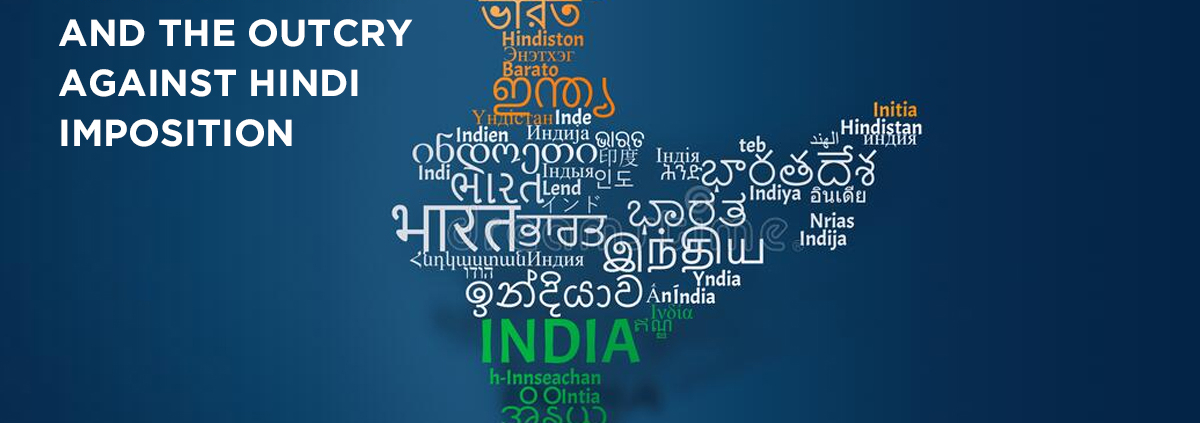India is home to nearly 20,000 languages and dialects. Of these, over 121 are spoken by more than 10,000 people, in our culturally rich and linguistically diverse nation. But even as we celebrate this glorious diversity, there are some who question the unique importance allegedly being given to Hindi, in comparison to ‘regional languages’.
The first thing to consider in this longstanding debate is, if there’s a single language that can represent India in the world, would that be Hindi? Or would you choose English, for the fact that it connects India to the wider world more effectively, while being an effective link language, within the nation? Since the BJP-led NDA government came into power in May 2014, there do appear to be several proactive efforts to promote the Hindi language. For instance, post demonetization, the new series of currency notes that were introduced carried Devanagari numerals. In certain sections this was perceived as an official effort to push the Hindi language, subtly.
The protests in Tamil Nadu
#HindiTheriyadhuPoda (“I don’t know Hindi, go man!”) was trending over the weekend, as I write this blog. It once again brought to life the age old debate over the perceived imposition of Hindi, in areas where it has traditionally never been spoken. What started as a simple slogan on a T-shirt, soon took the shape of a cultural rallying cry, in the southern Indian state of Tamil Nadu – an area that has a long history of protests against the perceived imposition of Hindi.
The linguistic aspirations of Tamil society have forever been rooted in strong emotional and cultural convictions. As long ago as in the late 1930s, there was a strident anti-Hindi agitation in the state – then the Madras Presidency – which lasted three years, from 1937 to 1940. In the 1960s, the Madras state erupted in all-round protest, against what were perceived as initiatives introduced by the union government, to impose Hindi on non-Hindi speakers. Some recent actions have reignited this sentiment among people in Tamil Nadu – such as milestones on national highways being changed from English to Hindi, and a parliamentary panel recommending that Hindi be made a compulsory subject in CBSE and Kendriya Vidyalaya schools, until the Xth grade.
Resistance to Hindi in non-Southern states
It is not as if the resistance to Hindi is restricted to south of the Vindhyas. There are also several other layers to the issue. Indians from the western states, such as Gujarat and Maharashtra, are also not overly well-versed in Hindi. Certainly, you are not likely to find much Hindi spoken in the north eastern states either. Curiously, even if you were to go to a typical village in the Gangetic plains – which are often perceived as being Hindi speaking regions – you are likely to find dialects such as Bhojpuri and Awadhi, rather than the codified modern version of Hindi.
Things are further complicated by the pre-independence politics in India, when the language issue was put into a religious framing. With Muslim elites preferentially patronizing Urdu, the political leadership that developed from these roots equated Hindi to Hindus. In fact, during the independence struggle, an attempt was made propagate ‘Hindustani’ – a hybrid of Hindi and Urdu. So differences in opinion, around projecting Hindi as a national language are neither new, nor isolated to specific geographical regions.
How will these language wars play out in the future?
As much as there is the perception of a Hindi agenda being pushed on the people of our country, there are also strong political movements that take advantage of the pride people take in their mother tongues – especially in regions where the language is not spoken. These movements and their leaders point to recent developments, which they project as an intensified promotion of Hindi, since the government of Prime Minister Narendra Modi came to power.
Despite such controversies, Prime Minister Modi’s use of Hindi on the international stage has also had some positive impact. He made a very popular speech at the United Nations General Assembly in Hindi, and often prefers to speak in the language, when meeting with foreign leaders. Regardless of political beliefs, an Indian leader speaking in a native language – in preference to English – is certainly powerful optics. Also, it’s important to remember that, despite Mr. Modi’s familiarity with Hindi, he himself is not what might be called a native speaker of the language.
It’s an undeniable fact that language continues to define the modern Indian identity. For most people it extends to being a cultural and emotional part of their lives. If the idea of forced Hindi imposition is to unite the country and bring the people together, it is a misplaced notion. The current protests can easily be disregarded as mere Twitter wars, but it’s probably a good idea to pay very close attention to the underlying sentiment, and respect it.




Very attentive and thoughtful